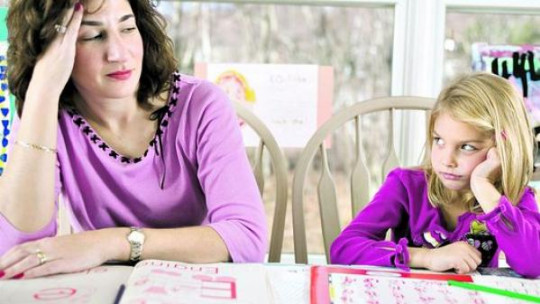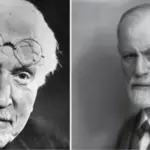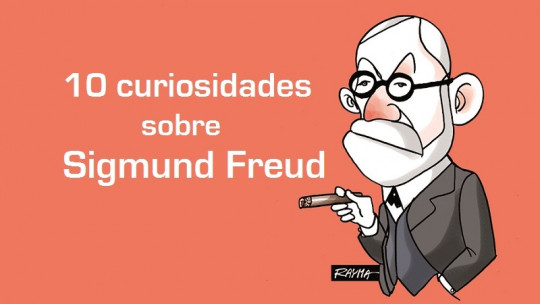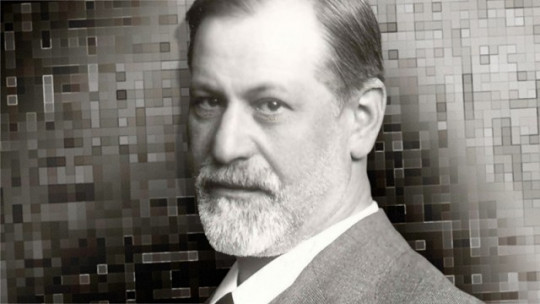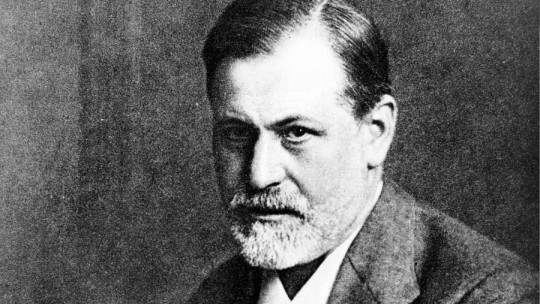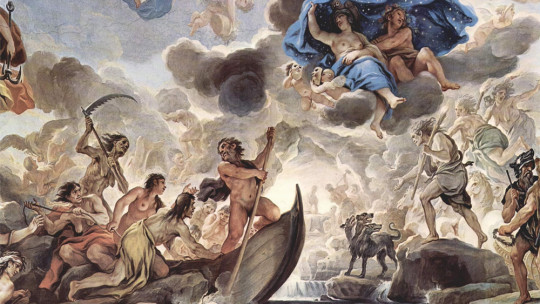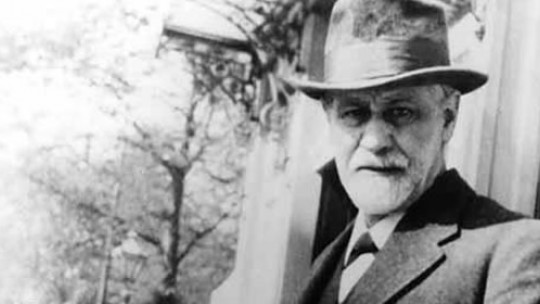
The current of psychoanalysis started by Sigmund Freud more than 100 years ago is one of the main influences on contemporary Western culture.
If his theories on the functioning of the unconscious have served as an influence in many areas of the humanities and art, it is no less true that a good part of his approaches have to do with human sexuality. Freud’s theory of psychosexual development, with its different stages, is the embodiment of this idea and that is why it has historically received a lot of attention.
In it, the father of psychoanalysis describes a series of phases of development of human beings that reflect the type of internal conflicts that we supposedly harbor within ourselves at each stage of life. Let’s see what it consists of, what are the phases of human development that he proposes, and why it has been criticized.
Sexuality according to Freud
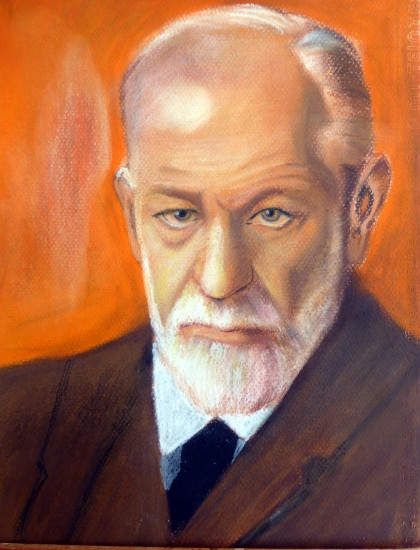
For Freud, Human sexuality is one of the main aspects of the vital energy that drives human behavior This energy, which was called libido, is the source of the impulses that, for the father of psychoanalysis, make us tend toward certain short-term goals and, at the same time, force other instances of our psyche to repress. these tendencies so as not to put ourselves in danger or come into conflict with the environment in which we live.
The vital energy that is expressed through sexuality, according to Freud, is present from the first weeks of our life, which means that our sexual aspect is not born in adolescence, as many researchers of his time maintained. Now, it must be taken into account that, in the context of Freud’s theory, this energy linked to sexuality goes far beyond the reproductive function and sexual arousal; It is conceptualized as something much more abstract and has to do with all the motivations that the individual tends to want to repress.
Within the framework of psychoanalysis, the repercussions of this do not simply have to do with locating the beginning of our sexual development at one point or another in our life calendar. It has profound implications for the way in which Freud related our personality to our intimate side affective and based on impulses.
The development of the unconscious
One of the essential ideas behind Freud’s theory of psychosexual development is that the way in which we manage the satisfaction of libido during childhood leaves traces in our unconscious that will be noticeable during adult life.
Thus, if factors external to a child mean that he cannot satisfy these tendencies as desired (for example, due to his parents’ reprimands), this anxiety translates into a fixation that has to do with ideas related to a specific erogenous zone (which does not have to be in the genital area). For Freud, therefore, both biology and upbringing intervene in psychosexual development
Other followers of the psychodynamic current ended up rejecting Freud’s deterministic vision, according to which the unconscious part of ourselves constantly manipulates us without us being able to do much about it. However, this way of thinking made Freud create the theory of psychosexual development, one of the most remembered in the history of psychology.
The stages of development and their fixations
Based on the different ways in which the stage of growth of minors conditions the appearance of one or another type of fixation, Sigmund Freud formulated the theory that would unite sexuality with the development of the Freudian unconscious
In it, it is proposed that in the first years of our lives we go through different stages of development linked to sexuality and different fixations, and that what happens during them will influence the way in which the unconscious conditions the person once they have arrived. to adulthood. That is, each of the stages of psychosexual development would mark the tempos that delimit what types of actions are necessary for express libido satisfactorily and which can create conflicts that remain entrenched in us unconsciously.
The drive phases of psychosexual development
From the psychosexual theory of personality development, it is understood that the past history of each person determines the way in which the power relationship is modeled between the unconscious structures of the individual, on the one hand, and the structures that fight not to express these elements that belong outside of consciousness, on the other.
Thus, the way a person behaves will depend on the way in which they have faced the different stages of psychosexual development and the characteristic challenges of each phase.
As for the father of psychoanalysis Libido is assumed to be the main type of energy that moves people these challenges and conflicts of each phase of maturation will have a more or less veiled connection with their way of experiencing sexuality (understood in a very broad sense in which all types of symbolism participate).
According to Freudian theory, stages of psychosexual development and their characteristics are as follows
1. Oral Stage (Birth to 1 year)
During the oral stage, infants derive pleasure and gratification from activities centered around the mouth, such as sucking, biting, and tasting. According to Freud, the primary focus of this stage is the satisfaction of oral needs, primarily nourishment from breastfeeding or bottle-feeding. Issues or conflicts during this stage, such as weaning too early or too late, may lead to fixation or personality traits associated with oral fixation, such as dependency or aggression.
The oral stage occupies approximately the first 18 months of life, and in it appear the first attempts to satisfy the demands promoted by the libido. In it, the mouth is the main area in which pleasure is sought. The mouth is also one of the main areas of the body when it comes to exploring the environment and its elements, and this would explain the propensity of the little ones to try to “bite” everything.
If babies are strictly prevented from using their mouths to satisfy themselves, this could produce a blockage that would cause certain problems to become fixed in the unconscious (always according to Freud).
2. Anal Stage (1 to 3 years)
The anal stage centers around the child’s experiences with bowel control and toilet training. Freud proposed that during this stage, children experience pleasure and conflict related to the control and elimination of feces. Successful completion of toilet training results in a sense of accomplishment and autonomy, while unresolved issues may lead to anal-retentive or anal-expulsive personality traits, characterized by rigidity or messiness, respectively.
This stage would occur from the end of the oral stage until 3 years of age It deals with the phase in which they begin to control the sphincter during defecation. For Freud, this activity is linked to pleasure and sexuality.
The fixations related to this phase of psychosexual development have to do with accumulation and spending, linked to the saving spirit and discipline in the first case, and with disorganization and waste of resources in the second. However, according to the father of psychoanalysis, these dynamics of spending and saving would not be expressed only or mainly through money management.
3. Phallic Stage (3 to 6 years)
The phallic stage marks the emergence of sexual curiosity and awareness of gender differences. Freud suggested that children develop unconscious desires and conflicts related to their genitals, particularly feelings of attraction towards the parent of the opposite sex (Oedipus complex for boys and Electra complex for girls) and rivalry with the same-sex parent. Resolving these conflicts involves the identification with the same-sex parent and the internalization of societal norms regarding gender roles.
This drive phase would last between 3 and 6 years, and its associated erogenous zone is that of the genitals. In this way, the main pleasurable sensation would be that of urinating, but in this phase the beginning of curiosity about the differences between men and women, boys and girls would also originate, starting with the obvious dissimilarities in the shape of the genitals and ending in interests, ways of being and dressing, etc.
Furthermore, Freud related this phase to the appearance of the “Oedipus complex”, in which male children feel attraction towards the person who plays the role of mother and feel jealousy and fear towards the person who plays the role of father. Regarding girls who go through this stage of psychosexual development, Freud “slightly adapted the idea with the Oedipus Complex to include these, even though the concept had been developed to make sense mainly in boys. It was later when Carl Jung proposed the Electra complex as a female counterpart to Oedipus.
4. Latency Stage (6 years to puberty)
During the latency stage, sexual impulses are repressed, and children focus on developing social and cognitive skills. Freud proposed that the energy invested in sexual and aggressive drives is redirected towards activities such as school, friendships, and hobbies. This stage is characterized by relative stability and the consolidation of identity and socialization.
This phase begins around age 7 and extends until the onset of puberty The latency stage is characterized by not having a specific erogenous zone associated with it and, in general, by representing a freezing of experiments in sexuality by children, partly due to all the punishments and reprimands received. That is why Freud described this phase as one in which sexuality is more camouflaged than in previous ones.
The latency stage has been associated with the appearance of modesty and shame related to sexuality.
5. Genital Stage (Puberty to Adulthood)
The genital stage represents the culmination of psychosexual development, with a renewed focus on sexual desires and relationships. Freud suggested that individuals seek to establish intimate and mature relationships, expressing their sexuality in socially acceptable ways. Successful resolution of earlier conflicts and the integration of healthy coping mechanisms lead to the capacity for love, work, and meaningful relationships in adulthood.
The genital stage appears with puberty and continues thereafter It is related to the physical changes that accompany adolescence. Furthermore, in this phase of psychosexual development, sexual desire becomes so intense that it cannot be repressed as effectively as in previous stages.
The erogenous zone related to this vital moment is once again that of the genitals, but unlike what happens in the phallic phase, here the necessary skills to express sexuality have already been developed through bonds of a more abstract nature. and symbolic that have to do with consensus and attachment with other people. It is the birth of adult sexuality as opposed to another linked only to simple instant gratifications obtained through stereotypical activities.
Freudian theory, in context
The theory of psychosexual development can lead to a certain alarmism if one thinks that poor management of the education of minors during these phases can leave them with trauma and all kinds of disorders if Freud’s ideas are not well understood. However, it must be taken into account that This theory was formulated and developed at a point when psychology had just been born
When Sigmund Freud developed his theories, he was based on specific cases of patients that he knew, that is, his way of research was based on a mixture of case studies and interpretation of the symbolic contents of people’s behavior. He barely established hypotheses that could be tested with reality, and when he did, he limited himself to observing, not conducting experiments. The theory of psychosexual development was no exception to this rule.
Nor does it make much sense to investigate the usefulness of the theory of psychosexual development using statistical analysis, because the formulation of these ideas was based on interpretation that was made about the patients’ actions and their past.
Partly for this and partly because Freudian psychoanalysis does not adhere to the epistemology used in current science, there is no reason to think that this theory serves to explain and predict the problems linked to sexuality and the socialization of people. This means that Freud’s psychosexual theory cannot be used to detect warning signs about whether children or adolescents are developing correctly or not, nor can it be used to ensure that mental disorders are due to these types of mechanisms.
Sigmund Freud’s theory of psychosexual development provides a framework for understanding the progression of childhood experiences and their influence on personality development. While Freud’s ideas have been subject to criticism and revision over the years, his contributions to psychology have had a profound impact on our understanding of human behavior and development.

